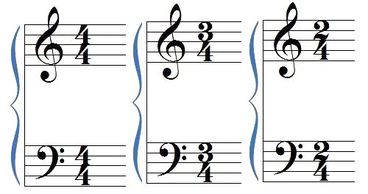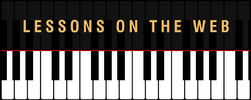|
I bet you already are familiar with the concept of the "beat" in music without even realizing it. You know when you hear a song or a piece and you start moving automatically in a rhythmic sort of way- dancing to the song?What you're connecting to is the beat in that song. We don't have to have an intellectual understanding of rhythm or beat to be able to just feel it and move with it; we just naturally seem to feel it and connect to it. When it comes to playing the piano however, we do need to have at least a basic understanding of what that "beat" is that we feel, connect to, and display in our own bodies and/or instruments such as the piano. So here it is: The "beat" in music - is a regular interval of sound, or rhythm. That's it. The important concept here, is that it is regular; meaning ongoing. Compare the beat in music to the beat of your own heart. You can feel how it regularly ticks on its own at a steady pattern of repetitions. Often, a nurse will check our heart rate by listening to our pulse which shows how many times our heart beats in one minute. Every piece of music has its own heart rate, or patterned beat. That beat will go faster in some pieces and slower in others, but you can always know that there is a "beat" to find in each piece. The key to knowing how fast that steady, regular beat will be, we have to know what the Tempo is. Tempo tells us just that: how fast to play and count the number of beats in each measure. Let's say for example that you have a measure with 4 quarter notes in it. You're going to play those 4 quarter notes in a steady rhythmic pattern, but you can play them at a fast tempo, or a slow tempo, and it won't change the steadiness of the rhythm at all. Once we know what our Tempo is we then need to look at all of the different Note Durations in each measure to know how to correctly count the measures. Note Durations tell us how long to play each note. We won't always be playing quarter notes. Sometimes we'll also have half notes, eighth notes, 16th notes, or whole notes. And we can also have rests included in each measure that get the same number of beats as their corresponding note values. For example, if you have a measure with one half note and 2 quarter notes in it, you'll count 2 beats for the half note, and 1 beat each for the quarter notes, to equal 4 beats again. Now, do we always count 4 beats in every measure in every piece? Not at all. We have to look at our Time Signature in order to know how many beats each measure will have and what kind of note will get the beat. We will come across a variety of different Time Signatures in our piano music as we grow and learn to play more difficult repertoire. Some of the most common ones that we'll see are:  Notice how there is one number over another one. The top number tells us how many beats we count in each measure. The bottom number tells us what kind of note we're giving that beat to. In this case, all of the bottom numbers are 4 which means that the quarter note will get the beat. We can also have a time signature with an 8 on the bottom - meaning 8th notes get the beat instead of quarter notes. You can always find the Time Signature at the very beginning of your piece right before the first measure and next to the clef sign for each hand. Make sure to notice if there are any changes in your time signature throughout your piece because sometimes there will be. All of these aspects of finding the beat in your piano music come under the Rhythm Category of learning piano. Tempo, Note Duration, Time Signatures - all work for, in a sense, the general manager that we know as Rhythm. So just what is the role of Rhythm in music? Rhythm is a combination of all of the above - that creates a recognizable pattern of organizing the notes in the piece. Without rhythm, the notes wouldn't make any sense because there would be no structure for them to fit into. Now that you have a better understanding of how rhythm works, why don't you click on the video right below and watch me demonstrate on the keyboard everything that we've gone over here. This will give you a visual reinforcement of this information and will allow you to practice it yourself along with me so you can really get a good grasp on how to find the beat and understand rhythm in your piano playing. Make sure you stay tuned to PianoLessonsOnTheWeb.com to learn much more and achieve your dream of playing the piano! |
AuthorMost blogs written by Archives
June 2020
Categories
All
|


 RSS Feed
RSS Feed